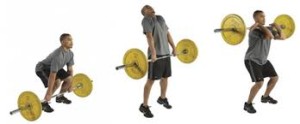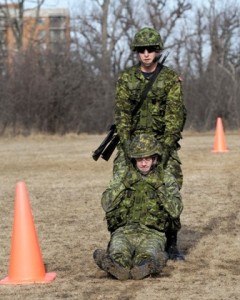When designing an exercise program, on what areas do we typically focus? In school, I was taught to think of; warm up, flexibility, resistance and cardiovascular/respiratory training (The
Historical Four). These four areas of focus remain the general recommendations from the ACSM. They have been the recommendations for decades. Actually, these Historic Four areas represent the standard protocol guidelines which most of the national chains in the fitness industry use. My question is, “Are these the only areas which need to be addressed and emphasized in the fitness routine?” Physiologically maybe, but the fact is; there are many other “components” than just these four.
There are many problems with addressing and utilizing only these basic four. First, humans
are peculiar. The fitness industry has realized this. We saw Jazzercise, then the spin-offs and
now Cross fit with the “WOD”. The fitness industry has used many methods to keep people
from becoming disinterested. Their rationale is as fickle as how we decide what we are going
to eat for lunch. So today we have the WOD, TRX and the never ending classes which are
being offered. This method does not deliver the long term results members’ desire, resulting
in an industry wide challenge of attrition from canceled memberships.
Secondly, the human body is very complex and has many anatomical and physiological functions and I hate to say it but we are not all created equal. Each of us has specific strengths, weaknesses and abilities and they all should be addressed accordingly. So by just training the (Historical Four) we are always going to inadequately train the body. Because of this the member or client will not acquire the desired result they initially joined up for. So they will eventually fail. If you want to ensure the greatest chance of retention, you must not allow people to fail in getting results.
Because of this we should look at the body and its systems as a complex and highly functioning machine. So now instead of the exercise program we have the Performance Plan. We understand the design of the human body and every day we are learning more. The human body and its systems have been thoroughly analyzed and we have more than enough information regarding its capabilities. So what other components are there and which ones will produce the best adaptations for best results?
Whether you train for general wellness and fitness, a specific look, a specific function such as ADL’s (activities for daily living) or a performance to succeed in sports or survive a highly dangerous mission we must train accordingly. All components must be prescribed in the appropriate ratios or amounts with all program design variables (Intensity, Frequency, Duration and Volume) adequately incorporated.
How do these principles change when we address the tactical athlete with regards to the components of the tactical performance plan? All components must address the strength and weaknesses of the individual, the physiological and psychological demands of the activity/mission and all relevant bio motor and cognitive skills that ensures success.
I have organized the components I have been taught and have expounded upon over time into a wheel. I believe this is foundational in program design. It is a pie chart that can be adjusted based on the individual, performance and mission. Athletes use these components all the time in their training routine and they all have different levels of priorities. The tactical athlete can and should follow these same design principles. Each spoke of the wheel will be larger or smaller based on evaluation results and coaching recommendations from the athletes’ feedback. The tactical athlete will turn these components into tactical related skills with tactical related implements, tactical related environments, and all other relative tactical information. Adjust and specify the design of the tactical program based on these components.
Here is my point, Mission Specific Training, (MST) is a vital component and is very similar to sport specific training, but it does not incorporate the same tools. For example do not assume that implementing the power clean will suffice for training the tactical athlete to pull more effectively in a mission related situation. Joletta Belton, (Team member of National Tactical Fitness) made an interesting observation, she commented, “I very rarely had the luxury of having weight distributed evenly on an Olympic bar when I was pulling in a work related situation”. How does the power clean relate to the movement patterns of pulling for the tactical athlete?

Yes power cleans require a pulling motion, but it does not represent how the tactical athlete will most likely have to pull in a tactical situation. I use this example because there was a session at the 2013 TSAC conference titled “Pulling techniques for the Tactical athlete”. The entire session was on how to perform the power clean! Pulling techniques’ for the tactical athlete may involve the movement pattern of the power clean on occasions but based on bio motor specificity adaptation principles it is not the best choice.
There are times when we will pull with two hands, straight up in the frontal plane, with a comfortable grip and weight distributed evenly, but it does not represent specific or functional pulling for the tactical athlete.
The “Component Wheel” is always evolving and has many sub categories and over time we all should add our own components as we see fit. The Component Wheel is an integral part of the tools I use and I hope this adds a different perspective when you design your next performance plan.


